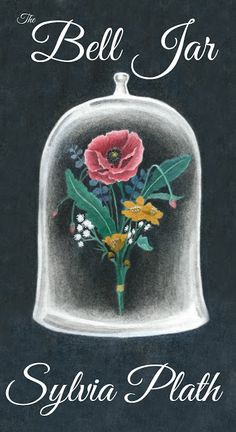
“I wanted to tell her that if only something were wrong with my body it would be fine, I would rather have anything wrong with my body than have something wrong with my head.” — (182)
The Bell Jar is a novel by Sylvia Plath that follows the life of a young woman named Esther Greenwood as she is trying to find her place in society, while also battling against her deteriorating mental health. She starts off in New York at a conference for young women working for a magazine, where she begins to feel isolated from her peers and doubts her place in life. She wishes for a successful life doing the things she loves (like writing, travelling, and meeting new and interesting people), but also feels the pressure to want to be the ideal woman, as a housewife and mother. She fleetingly tries to explore romance while in New York, but nothing pans out before she returns home to live with her mother the rest of the summer. There, her mental health declines (especially after being rejected from an exclusive college writing class), until she stops eating, sleeping, or bathing entirely. She briefly starts seeing a therapist, who belittles her and doesn’t help her with her problems. After giving up treatment with him, Esther continues to try to find a purpose for herself, until her mental and social stagnation drives her into attempting suicide.
After being discovered, Esther is admitted into a hospital where her condition worsens. The doctors and nurses there are still improperly treating their patients, and treat them like frustrating children rather than adults who need help. This angers Esther, and she becomes stubborn and unresponsive almost as an act of rebellion. When she’s in danger of being put into an even worse hospital, she receives a saving grace: a novelist named Philomena Guinea who read about Esther’s case and wanted to help her get actual treatment for her problems. We see the first improvement when Esther is here, in a private facility that allows the women staying there a controlled amount of freedom and genuine support along with well-administered treatment, where most of the doctors are also women. Esther slowly improves, barring some setbacks, and for once she feels like she can breathe normally again. One of her roommates ends up being an old friend, Joan, who has had similar struggles to Esther’s. She seems to be improving even more than Esther, and is even released for a short time. Near the end of the book, however, Joan is readmitted and shortly after commits suicide. The novel ends with Esther entering a meeting to determine if they believe she is well enough to leave the hospital.
Even from the beginning, we can feel Esther’s struggle with her identity. This in particular drew me in deeply to the mimetic register, as I related to Esther pretty heavily. I began “reading for” that relationship, and I grew attached to the character (who is said to be a semi-representation of Plath herself). It was difficult in this book to tap into the thematic or synthetic registers, as the themes and constructions become more evident once you experience the narrative as a whole.
However, upon finishing the book there are clear themes of mental illness and the treatment of those who are mentally ill, and the treatment of women in society. These also tie into different cultural codes– as will be discussed later. We can start to recognize the synthetic register more as well when Esther’s mental state worsens. The format of the story gets more fragmented and nonsensical, which we can see connects directly to Esther’s own perceptions and feelings. Even though this shift is tragic, we can recognize it and tune into the constructed nature of this story from there.
In our class, we examined Robert McKee’s controlling/counter idea theory from his book Substance, Structure, Style, and the Principles of Screenwriting which describes “how and why life undergoes change from one condition of existence at the beginning to another at the end” (115) and adapted it into a system of controlling and opposing controlling values. These values come to life when we consider the premise of any piece of media, and in this case the premise is something like “What happens when a girl tries to define her life between her personal identity and societal expectations?”.
The controlling values in this text encapsulate the struggle between taking care of ourselves and addressing our problems and the idea that we should completely accept ourselves, and our flaws, instead of resolving them. In that regard, the controlling value’s purpose would be: “Attending to one’s problems lets one succeed despite them”, while the context is “Settling for what you are results in personal stagnation and a decay of self”. This is the controlling idea that Esther subscribes to in the end: she has to face her problems instead of ignoring them in order to better herself.
However, some other characters in the book (as well as Esther, in the beginning when she avoids her declining mental state) would argue along the lines of the opposing controlling value, whose purpose states that “Accepting oneself, flaws and all, lets one grow and find peace”, and whose context would be “Focusing on one’s failures and shortcomings holds hostage one’s potential”.
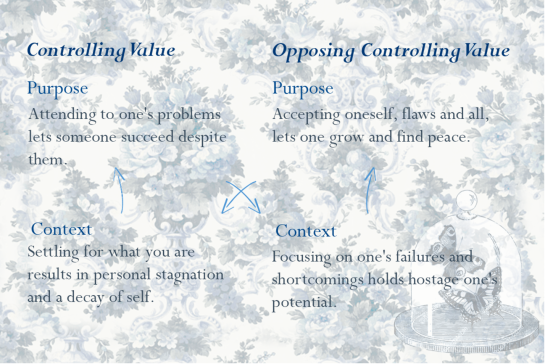
Esther is pressured to excel, to do well at the magazine and to have her life in order otherwise. When her mental health’s decline starts to affect her more, the general notion that she receives from the people around her is that she should just keep working, keep going and get on with it because she’s so talented and has so much potential. This instills the idea in her mind that if she works towards and achieves what she’s supposed to want (a good job, a lover, a relationship, the ability to do shorthand, etc.) then she’ll be satisfied and feel better. However, if she simply completely accepts herself, including her shortcomings, she can never attend to the very serious problems that she has and get proper help for them.
We see this sentiment when Esther gets out of her first improper electroshock therapy appointment. She says to her mother that she’s “through with that Doctor Gordon” (145), and expresses that she wants to stop her appointments. Her mom responds proudly, saying she knew Esther wasn’t like “those awful dead people at that hospital” (145), and that she knew Esther would “decide to be all right again” (146). Her mom had faith that Esther could power through what was bothering her, and that she could simply “decide” to be okay. This was harmful, though, because as it turns out Esther WAS on the path to becoming like the people in Dr. Gordon’s hospital, and she did need proper treatment in order to be “all right again”.
The Bell Jar can be categorized as both realistic fiction and a sort of “coming of age” novel. The events that happen in the book reflect real issues that happen to people, including struggles with identity and insanity. It also follows Esther as a young woman through a significant period in her life that shapes who she is. More specifically, this novel can be described as a “Bildungsroman”, because it focuses on the psychological struggle and growth of its main character.
I would also suggest that this book is a commentary of the psychological treatments available at Plath’s time, and specifically how women with mental illness were perceived and addressed. The focus on the electro-shock therapy is a big indicator of this, as well as Esther’s experience in Doctor Gordon’s hospital. Esther is deeply unsettled when she goes for her appointment there, and when she does get the procedure done, she vows to never go back again because it was so terrible (because it was done incorrectly due to negligence). We, as readers, can understand why Esther would refuse treatment after such an experience, because it was awful and it was written in a way that framed it as incorrect and bad. She describes the people in the hospital as looking “as if they had lain for a long time on a shelf, out of the sunlight, under siftings of pale, fine dust” (141). We know that Esther needs help, but we would rather her not get that help at all than stay in a place like this. Plath may have been commenting on the lack of quality, affordable care for the mentally ill at the time, since many people end up in places like Dr. Gordon’s hospital, improperly cared for and only shells of their former selves.
There’s also a focus here on the way men specifically treat Esther in this regard. As her first doctor, Dr. Gordon is very dismissive of her problems and doesn’t treat her with the basic respect and recognition that she expected and hoped for when going to therapy. At her second appointment with him, she tell him that she still feels as bad as the previous week and he “quirked an eyebrow, as if he didn’t believe it” (135). We get the sense that he’s condescending to her, and all actual talk about her treatment is done through her mother, instead of recognizing Esther as her own person. The first time we see Esther truly respected and cared for by a doctor is when she meets Doctor Nolan, her first woman doctor at the private facility that Philomena Guinea sent her to.
When we consider forms, like in Kenneth Burke’s “Lexicon Rhetoricae”, we can examine the ways the author structured the book in specific and intricate ways. The language of the book uses a lot of figurative language such as metaphor and simile, which would be examples of minor or incidental forms. For instance, chapter 9 begins with describing an acquaintance of hers in New York, saying things like “her cat-like limbs”, “like a tropical bird”, and “moved like a mannequin” (99). Since the narrator is Esther speaking to us, this reflects the character’s true talent in writing. As a character she wants to be a writer or an editor, and often romanticizes the life of an author or poet. The writing also is more eloquent and well-written when Esther is in her more stable, hopeful mental states than in the scattered fragments when she’s in the hospital the first time. In chapter 14, when Esther first awakes in the hospital after her suicide attempt, the writing is scattered and relies only on the sensations that Esther is feeling. It starts with “It was completely dark” (170), and continues to describe the scene moment by moment as Esther is aware of more things. There are also a lot of asides to anecdotes and other stories during this part of the novel that interrupt the main plot in jarring ways. Often, it’s hard to follow Esther’s train of thought when she’s struggling the most with her mental state.

We can also see examples of qualitative progressive form, which is when moods portrayed in the story then carry us into different moods. One fairly obvious example of this is Esther’s thought of suicide. The way it is addressed is gradual, so that we’re there with Esther and while we don’t support her thoughts or actions, we can empathize with them. We see the progression of these thoughts, from her purposelessness in life to her first “attempt” when she considers cutting her wrists in the bath (which she was unable to do because “the skin of [her] wrist looked so white and defenseless [she] couldn’t do it” (147)). After that, she tries hanging herself, only to have no place to hang, and tries drowning herself in the ocean only to have her body refuse to stop floating back up. She also questions a friend of one of her friends about suicide, and he responds that if he were going to do it, he’d “blow [his] brains out with a gun” (156). It’s important to point out that after asking this friend about how he’d use his father’s gun and if his father lived near her, he doesn’t acknowledge that worrisome line of questioning at all. In fact, when Esther first poses the question, she writes that he “seemed pleased” (156). This is indicative of some of the thoughts about mental illness and suicide, that it’s often not taken seriously and can be seen as an edgy joke or just amusingly dark subject matter. In any case, this repetition of mentioning suicide is a progression of different moods for Esther, and as a reader we are taken along on this journey so that her actual, nearly-successful suicide attempt doesn’t shock us. It’s expected, and because of how much it’s mentioned, we can assume that it will happen.
I mentioned before about cultural codes that are present in this book. One of the most prominent ones that we see relates to the treatment of the mentally ill, specifically mentally ill women. We see divisions between proper care and harm, between fitting in/complacency and finding yourself/resisting mistreatment. We see these codes happen in everyday life, and this story involves Esther’s personal take and struggle with these issues. There is an extremely different feeling when Esther experiences a female doctor, in a female-only hospital, than in any of the other forms of treatment she received. Esther’s only meaningful connections with people have been with the women she encounters in her life, from her friend Doreen, to Jay Cee, to Dr. Nolan, and finally to Joan. The women that help Esther, specifically Dr. Nolan, are portrayed with much more of a warmth and sensibility than the men like Dr. Gordon or Buddy Willard. Doctor Nolan listens to Esther and allows her to act how she sees fit, instead of shaming her or scolding her. She goes along with what she thinks Esther wants, possibly so that Esther feels like she has some control over her life. For instance, Esther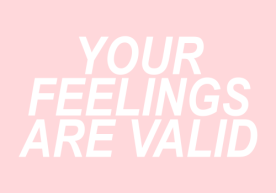 ’s mother was starting to have a negative impact on Esther’s mood, so Dr. Nolan arranged it so that Esther would not see any visitors for a while. When Esther learns this, she is surprised and responds, “Why that’s wonderful” (201). When, in the same conversation, Esther mentions that she hates her mother, Dr. Nolan only smiles and says “I suppose you do” (203). This is an example of Esther’s emotions being accepted as valid no matter how extreme they may be, which is a big part of making progress with a mental condition.
’s mother was starting to have a negative impact on Esther’s mood, so Dr. Nolan arranged it so that Esther would not see any visitors for a while. When Esther learns this, she is surprised and responds, “Why that’s wonderful” (201). When, in the same conversation, Esther mentions that she hates her mother, Dr. Nolan only smiles and says “I suppose you do” (203). This is an example of Esther’s emotions being accepted as valid no matter how extreme they may be, which is a big part of making progress with a mental condition.
At the same time, Esther has no good experiences with any men in her life. On her last night in New York, she goes out with Doreen who finds a date for her to go with. Her date, Marco, “was a woman-hater” (106), and he attempted to rape her shortly into the night. On a less extreme note, she has a complicated relationship with Buddy Willard, her childhood friend and sometimes-romantic interest. Buddy represents a perfectly respectable young man for the time, but he is dull and boring and doesn’t recognize Esther for her talent and worth. He often belittles her and criticizes her dreams, and then expects her to have feelings for him and take care of him. The type of girl who would love Buddy and marry him would be a watered-down version of Esther who let him walk all over her.
It’s evident that Plath was aiming for the more radical ideas towards feminism and deconstructing sexism, by bringing to light the different ways men will tear women down and how women can raise each other up and understand each other in ways no man can. Once Esther can finally abandon her dependence on the men in her life when she is in the hospital with Dr. Nolan, she starts to make progress in getting better. 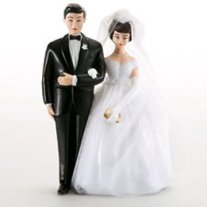
The sentiment about marriage also plays into a cultural code. At the time this story takes place, it was still mostly expected of women to settle down and get married eventually and submit to the men in their lives. Esther tries to spend the night with a simultaneous interpreter that she meets, but it doesn’t seem to go anywhere and she starts to consider why she even tried in the first place. She wanted to lose her virginity, but it’s pretty heavily implied that she only wanted to do so because she felt like she must. (A haunting thought crosses her mind when Marco attempted to have his way with her, “It’s happening … If I just lie here and do nothing it will happen” (109). She saw the prospect of getting raped as a potential positive thing, since at least she’d lose her virginity). There are repeated times where Esther considers herself as a married woman, but every time she considers that future dreadfully boring. When lying in the bed of the interpreter, Constantin, she thinks about how she “never wanted to get married”, because “the last thing [she] wanted was infinite security and to be the place an arrow shoots from” (83). Ester is expected to want marriage and so she believes that she must want it, but every time she considers it, she can’t imagine a future where she is just some housewife all day.
The symbolic code is also evident in this novel when Esther talks about the concept of the bell jar. She envisions her heart as being trapped within a bell jar, unable to feel the fresh air of mental stability. When the proper shock treatment at the last hospital starts to work, Esther says, “I felt surprisingly at peace. The bell jar hung, suspended, a few feet above my head. I was open to the circulating air” (215). The bell jar imagery is interesting, because there is a unique relationship between those who are inside and outside of the metaphorical “bell jar”. Those who are inside are suffering, but can never truly express that to those who are viewing because the glass separates them. Those who are outside may wish to help, but all they can really do is observe. The jar represents mental illness, or depression more specifically in this case, that is always looming once someone experiences it. Only once the person stuck inside the bell jar recognizes that they are stuck and in need of help can the jar be lifted, if only momentarily.
To me, it’s pretty clear that as much as this book was written for those “in the bell jar” to relate to, it’s also a book on how to (and NOT to) treat those who are suffering with mental illness. Our narrator is unreliable, since she tells us about her assumptions and perceptions about what’s going on– including her paranoid thoughts– even when we know they’re not legitimate. In that regard, the ideal narrative audience would be someone who is right there with Esther and agreeing with her all the way. They believe her and her paranoid thoughts (like when she tells her mother that her roommate at one of the hospitals was imitating her (178)). Taking a step back, the (regular) narrative audience would at least be someone who supports Esther and cares about her, but maybe can recognize when she’s being unreasonable. The narrative produces sympathy of Esther, and as readers we are supposed to feel sad when she is sad, and be happy when she gets the help she needs.
There is a danger with this book with being too close to the ideal narrative audience. The entire time, Esther is searching for help and for understanding, reaching out for someone to feel how she feels and relate to her experiences. Because of the subject matter, this is difficult for many people to do and can bring about feelings of depression and hopelessness within a reader who is too closely aligned with the ideal narrative audience. It’s important to recognize the kind of violence that this or any book can do to you, and remember to stay removed enough from the text in order to both be safe and to appreciate the book for its constructed value. This book was written in order to make the reader question their role, to examine how they feel and how they should be feeling. I believe that Plath, as much as she wanted to bring light to the problems of those suffering with mental illness, was also considering an authorial audience of people who already had the feelings Esther had and co
uld see how those feelings were unhealthy. The writing of this book has a questionable morality in that sense, however, since the subject matter is so delicate– ma ny people have succumbed to their feelings of depression after reading this book.
ny people have succumbed to their feelings of depression after reading this book.
However, in my experience the novel is more hopeful than that. Esther is always going to have a problem, and she’ll always have a bell jar looming overhead. But at the end of the book, we see a new version of her that no longer appears to be very obsessed with the expectations
placed onto her, and instead we see her gearing up for a life that she’s ready and willing to live in. After all the mistreatment and misunderstandings from the people in her life, Esther finally got comprehensive treatment for her problems and she can start to live a better life.
This book has had a big effect on me. I, personally, am dealing with a lot of the emotional problems that Esther has (though not in quite as extreme of a way). It felt good to really relate to a character, in the way that she questioned her place in life and even down to her declining hygiene habits and loss of a sense of purpose. If I’m being honest, I’ve been facing a rough patch mentally for the better part of the last few years. I’m very glad that I was able to experience this novel in this way, and to get to know it so intricately through the different methods we’ve learned in class.
It’s so interesting to me to see this whole world of literary analysis that I never got to experience before. I’m not a writing arts major, and I came into this class after desperately trying to search for interesting electives (after enrolling to Rowan/registering pretty late due to my feelings of hopelessness that affected my desire to even transfer to another school after graduating community college, but that’s another story). However, I do believe that I’d be able to use the things we learned in this class to develop some far superior writing to anything I’ve written in the past. Learning what we’ve learned is very important for keeping the writing choices we make in mind, and realizing how so many things affect a work of literature overall. The style of writing, the plot and how it’s structured, the values we instill into our writing, and so many other things are all interwoven whether we realize it or not. Now that I am aware of it, however, I can utilise all of these things to make anything I write that much better and more effective for whatever purpose I’m trying to achieve. We spent the whole semester working on analyzing our “reading for’s”, and now I get to turn around and realize what I’m writing for.
Plath, Sylvia. The Bell Jar. Harper & Row, 1971.

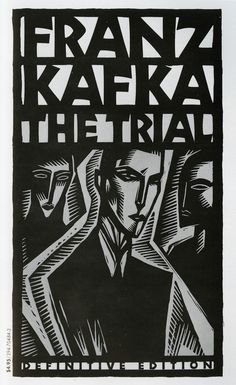
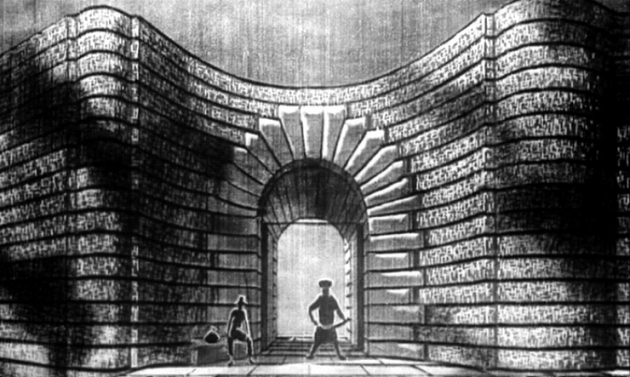 The man tries ways to enter including bribing the guard, but the guard says “I take this only to keep you from feeling that you have left something undone”(pg.198). The man waits for years and as he is about to die asks the guard why no one else has tried to enter. The guard says “No one but you could gain admittance through this door, since this door was intended only for you. I am now going to shut it”(pg. 198). This story concludes the foolish nature of the man who was deluded to think the law was attainable at all and that his purpose in life was to try and achieve it.
The man tries ways to enter including bribing the guard, but the guard says “I take this only to keep you from feeling that you have left something undone”(pg.198). The man waits for years and as he is about to die asks the guard why no one else has tried to enter. The guard says “No one but you could gain admittance through this door, since this door was intended only for you. I am now going to shut it”(pg. 198). This story concludes the foolish nature of the man who was deluded to think the law was attainable at all and that his purpose in life was to try and achieve it.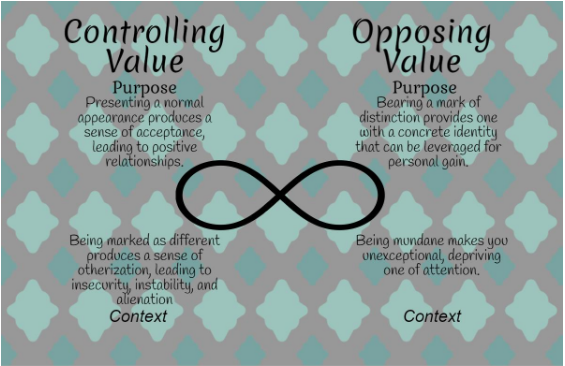
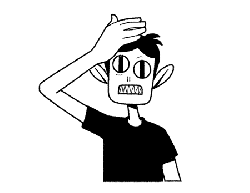 What I do see, however, is, as defined by Silverman in chapter 6 of
What I do see, however, is, as defined by Silverman in chapter 6 of  we didn’t expect him to say. If we can learn to do that with books, we might learn to do that with people” (17). I would consider this to be the “actual audience” discussed by Rabinowitz in
we didn’t expect him to say. If we can learn to do that with books, we might learn to do that with people” (17). I would consider this to be the “actual audience” discussed by Rabinowitz in  The change of heart is random after she’s put herself through so much to get what she now seems to reject, and we know that Lucy Grealy doesn’t have a happy ending. She overdosed on heroin not too many years after her book was published. For the actual audience, the self-love and body acceptance moral is evident. But when the text is read more closely, the authorial audience perceives Lucy’s true pain and that this ending is a bit fake. Lucy’s memoir was written to be published, and a positive resolution was needed for it to be publishable.
The change of heart is random after she’s put herself through so much to get what she now seems to reject, and we know that Lucy Grealy doesn’t have a happy ending. She overdosed on heroin not too many years after her book was published. For the actual audience, the self-love and body acceptance moral is evident. But when the text is read more closely, the authorial audience perceives Lucy’s true pain and that this ending is a bit fake. Lucy’s memoir was written to be published, and a positive resolution was needed for it to be publishable.


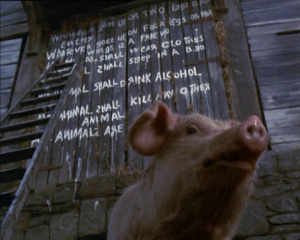
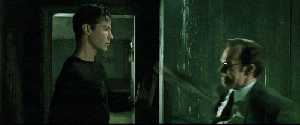



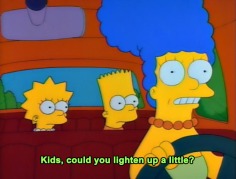 there’s no point in trying to change our fate because we are insignificant to the workings of the universe. Or something like that.
there’s no point in trying to change our fate because we are insignificant to the workings of the universe. Or something like that.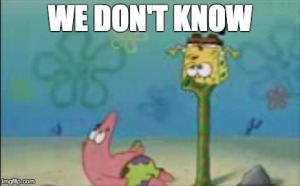

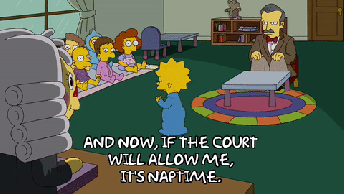
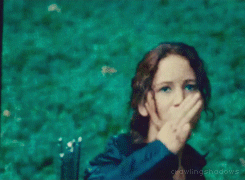 Dystopian literature exists for a laundry list of reasons, but I’ll mention just one in the context of
Dystopian literature exists for a laundry list of reasons, but I’ll mention just one in the context of 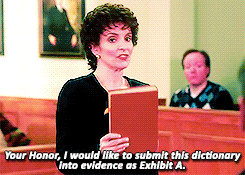

 Anthony Perkins playing K. when a stranger (Franz one of his warders), enters his bedroom.
Anthony Perkins playing K. when a stranger (Franz one of his warders), enters his bedroom.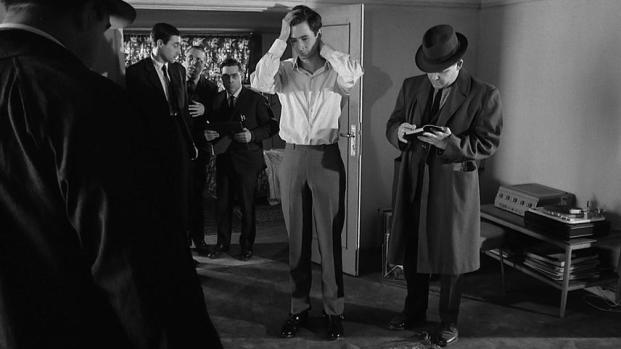 K. being questioned by the inspector, the warders and K.’s colleagues from the bank being present.
K. being questioned by the inspector, the warders and K.’s colleagues from the bank being present. 


 The Bell Jar
The Bell Jar 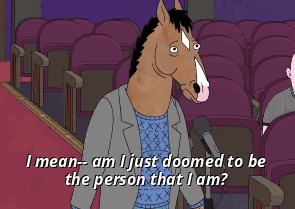 I decided on this topic because many people treat Esther as if she has no reason to be depressed or as if it is a conscious choice she is making to act and feel the way she does. Backtracking a little bit, the thematization would be that Esther is kind of an odd and different girl (and everyone treats her as such). According to Silverman, the thematization “involves a quite complex operation, in which the semic code plays an important role” (258). We know that the semic code involves the repetition of things, semes, around a proper noun. Maybe it’s a bit of a stretch, but could we argue that Plath does a lot of work to prove and repeat Esther’s differences? We see it in her struggle to fit in at her job, relate to her peers, and more.
I decided on this topic because many people treat Esther as if she has no reason to be depressed or as if it is a conscious choice she is making to act and feel the way she does. Backtracking a little bit, the thematization would be that Esther is kind of an odd and different girl (and everyone treats her as such). According to Silverman, the thematization “involves a quite complex operation, in which the semic code plays an important role” (258). We know that the semic code involves the repetition of things, semes, around a proper noun. Maybe it’s a bit of a stretch, but could we argue that Plath does a lot of work to prove and repeat Esther’s differences? We see it in her struggle to fit in at her job, relate to her peers, and more. This scene is pretty devastating – Esther is now blaming herself for something she can’t control, and she is suffering extreme pain. It’s no surprise that this shock therapy didn’t work, failing to solve the enigma, which is called jamming in the hermeneutic morpheme. We see a snare before her shock treatment when Esther considers running, and we see a snare after the treatment when we witness Esther’s suicidal thoughts and practice for her future suicide attempt. Silverman says, “The snare represents the most intricate of the hermeneutic morphemes, and the one richest in possible variations” (Silverman 260). Esther tries to literally evade the possible answer to her problem by running away from her treatment appointment. Afterward, she considers trying to evade her enigma literally by ending her life altogether.
This scene is pretty devastating – Esther is now blaming herself for something she can’t control, and she is suffering extreme pain. It’s no surprise that this shock therapy didn’t work, failing to solve the enigma, which is called jamming in the hermeneutic morpheme. We see a snare before her shock treatment when Esther considers running, and we see a snare after the treatment when we witness Esther’s suicidal thoughts and practice for her future suicide attempt. Silverman says, “The snare represents the most intricate of the hermeneutic morphemes, and the one richest in possible variations” (Silverman 260). Esther tries to literally evade the possible answer to her problem by running away from her treatment appointment. Afterward, she considers trying to evade her enigma literally by ending her life altogether.